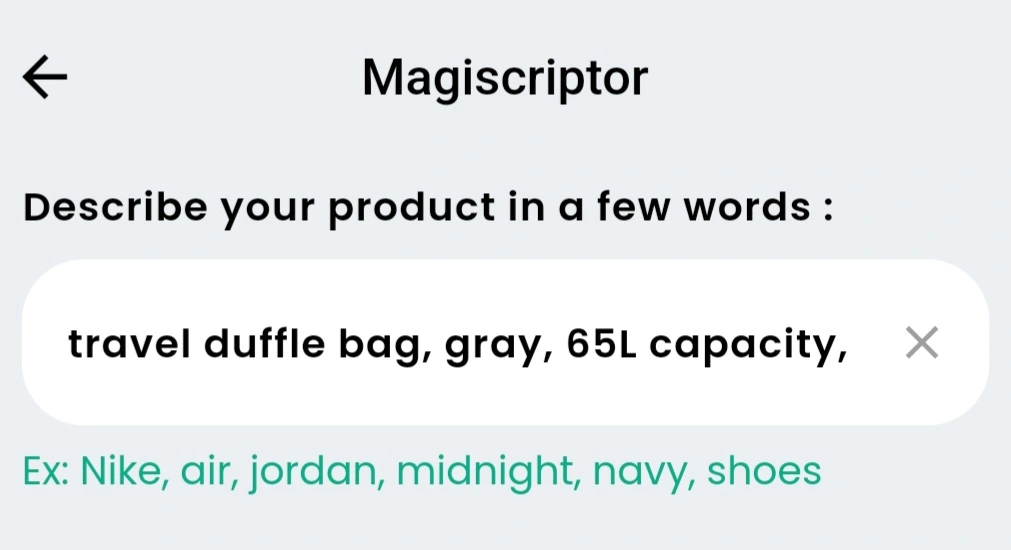Don’t have time, expertise, or both to write descriptions for the products listed on your e-commerce website?
If yes, then AI product description writing tools are an option for you to write product descriptions but you might be wondering that do AI-written product descriptions rank on search engines?
Well, to cater to your concern, we bring you this guide in which we will discuss if AI-generated product descriptions are good enough to be ranked on search engines.
Moreover, we will find out if AI-generated descriptions are against search engines’ guidelines or not. So let’s start:
Table of Contents
ToggleWhat is an AI-Written Product Description?
An AI-written product description refers to a product description that has been generated or written by an AI writing tool such as Magiscriptor.
AI models, like ChatGPT, are trained on a vast amount of text data and learn to generate coherent and contextually relevant descriptions based on that training.
To create an AI-written product description, the AI model analyzes the input data or prompts provided about the product, such as its features, specifications, or key selling points.
It then generates a description by employing natural language generation techniques, attempting to mimic human-like writing styles and tones.
Are AI-Written Product Descriptions Against Search Engines’ Guidelines?
The latest Google Search guidance about AI-generated content that got released in February 2023 says that AI-Generated content is not against Google’s Guidelines if it’s not intended to manipulate search rankings.
According to Google, if you are generating value-added content through AI that has the facts right and demonstrates qualities of E-E-A-T then it complies with Google Search guidance.
Similarly, other search engines like Bing, Yandex, and Yahoo also have a pro AI-generated content stance. So we can safely say that AI-written product descriptions are not against search engines’ guidelines as long as your intent is right and honest.
Do AI-Written Product Descriptions Rank on Search Engines?
AI-written product descriptions indeed rank well on search engines if they are meeting search engine guidelines that we have discussed just above.
Search engines like Google and Bing aim to come up with the most relevant products for people searching for them online.
So as long as you are generating product descriptions with AI that effectively justify and explain the products while offering insight to the target audience, there is a good chance they will rank well in search engine results.
Tips for Generating Product Descriptions with AI that Rank
1- Use the Right Prompts to Describe Your Products
When generating product descriptions with AI, it’s important to provide the right prompts to ensure accurate and relevant descriptions. The prompts serve as guidelines for the AI writing tools and influence the output it generates. Here are a few tips to use the prompts effectively when writing product descriptions:
A) Be Specific
Clearly define the key features, benefits, and unique selling points of your product in the prompts. This helps the AI tool to focus on the most important aspects and generate descriptions that highlight them effectively.
B) Include Relevant Keywords
Incorporate keywords that are commonly associated with your product or industry. This will help the AI writer to better understand the context and generate descriptions that align with buyer search queries.
C) Provide Examples
If there are specific attributes or characteristics that you want the AI writing tool to emphasize then provide examples in the prompts. This can help guide the AI model’s understanding and ensure the generated descriptions capture the desired information accurately.
2- Add A Human Element to Descriptions
While product descriptions written with an AI tool save time and effort, adding a human element to them can make them more engaging and relatable to potential buyers. Here are a few tips for you to add a human element to your descriptions:
A) Customize the Descriptions
After generating the initial draft of your product description with AI, review and edit it to add a personal touch. Tailor the language, tone, and style to match your brand’s voice and connect with your target audience.
B) Inject Storytelling Elements
Craft narratives around your products to evoke emotions and create a compelling story. This can help potential buyers relate to your products and develop a stronger desire to make a purchase.
C) Highlight User Experiences
You can also consider incorporating testimonials, reviews, or anecdotes from satisfied customers to add credibility and build trust. Sharing real-life experiences can make the descriptions more persuasive and relatable.
3- Check if Generated Information is Right
When using AI to generate product descriptions, it’s crucial to verify the accuracy and correctness of the generated information.
One way to do it is to double-check the details provided in the generated descriptions by referring to trustworthy sources such as product specifications, user manuals, or other documentation. This helps validate the accuracy of the information.
Another way is to establish a process for reviewing and verifying the AI-generated descriptions before publishing them. Assign this task to a knowledgeable proofreader who can identify and rectify any inaccuracies or inconsistencies.
4- Make Sure Descriptions Cater to Buyers’ Intent
To generate product descriptions that resonate with potential buyers, it’s essential to understand their intent and tailor the description accordingly.
For that it’s important to research your target audience: Gain insights into your target audience’s demographics, preferences, and pain points. These details will help you align the generated descriptions with your buyers’ specific needs and interests.
Secondly, you should address buyer concerns in your product descriptions. Anticipate and address common questions or concerns potential buyers may have about your product. Moreover, incorporate relevant information in the descriptions to alleviate any doubts and instill confidence in their purchasing decision.
In addition, you should emphasize in your description how the product solves a problem or fulfills a need for the buyers. Focus on the benefits and outcomes that your buyers can expect, showcasing how your product can improve their lives or address their pain points.














